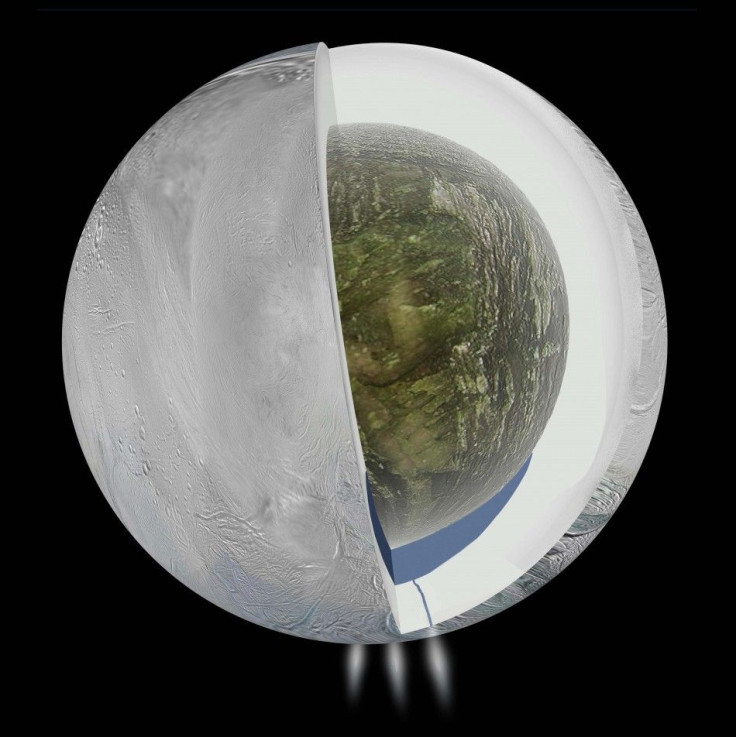NASA's Cassini Mission Detects Large Hidden Ocean inside Saturn's Moon Enceladus; A Possibility of Extraterrestrial Life

Probing life beyond Earth has been a hefty task for our today's scientists, but as of recent NASA detected a large hidden ocean inside Saturn's moon Enceladus adding to a possibility of extraterrestrial life.
Saturn is a very reach planet, surrounded by NASA's discovery of 53 moons orbiting the sixth planet from the sun. According to NASA, since the Cassini mission has been launched to probe Saturn, the number of satellites orbiting Saturn has increased. Enceladus, Titan, Dione, Mimas, Rhea, Tethys, Iapetus, Hyperion and Phoebe were just some of Saturn's known moons.
In 2005, the NASA's Cassini spacecraft was reported to have made a theory regarding an "interior reservoir" in Saturn's moon Enceladus, and recently reports came that a new data from the Cassini spacecraft and Deep Space Network were issued to offer the first glimpse of geophysical measurements of the internal structure of Enceladus.
According to NASA, "the gravity measurements suggest an ice outer shell and a low density, rocky core with a regional water ocean sandwiched in between at high southern latitudes." The new data, according to a scitech daily report, is considered to have a possibility of harboring life.
A paper published on sciencemag.org stated that Enceladus has mostly been the focus of NASA's Cassini spacecraft flybys. The said moon is considered to be roughly 10 times smaller than Saturn's largest moon Titan, but there had always been hints of Enceladus having a reservoir of water.
According to the study, "the moment of inertia and hydrostatic equilibrium" from the calculated data that has been collected suggested the presence of a large ocean with a deepness of 30 to 40 kilometers inside Enceladus.
"The Cassini gravity measurements show a negative gravity anomaly at the South Pole that however is not as large as expected from the deep depression detected by the onboard camera," said Luciano Iess of Sapienza University of Rome, the lead author of the paper published on sciencemag.org.
"Hence the conclusion that there must be a denser material at depth that compensates the missing mass: very likely liquid water, which is seven percent denser than ice. The magnitude of the anomaly gave us the size of the water reservoir," the lead author added.
The new data collected through NASA's Cassini mission resulted to euphoria with hopes that, indeed, Saturn's moon Enceladus can really harbor microbial life.
READ MORE:
NASA Scientists: Jupiter's Moon Ganymede May Have Ice and Liquid Oceans, Largest Moon Can Support Life?
NASA Operation IceBridge Survey Flight Captures Breathtaking Views of Greenland [PHOTOS]
NASA Hubble Space Telescope Celebrates 24 Years in Space; Releases New Image of Monkey Head Nebula





















